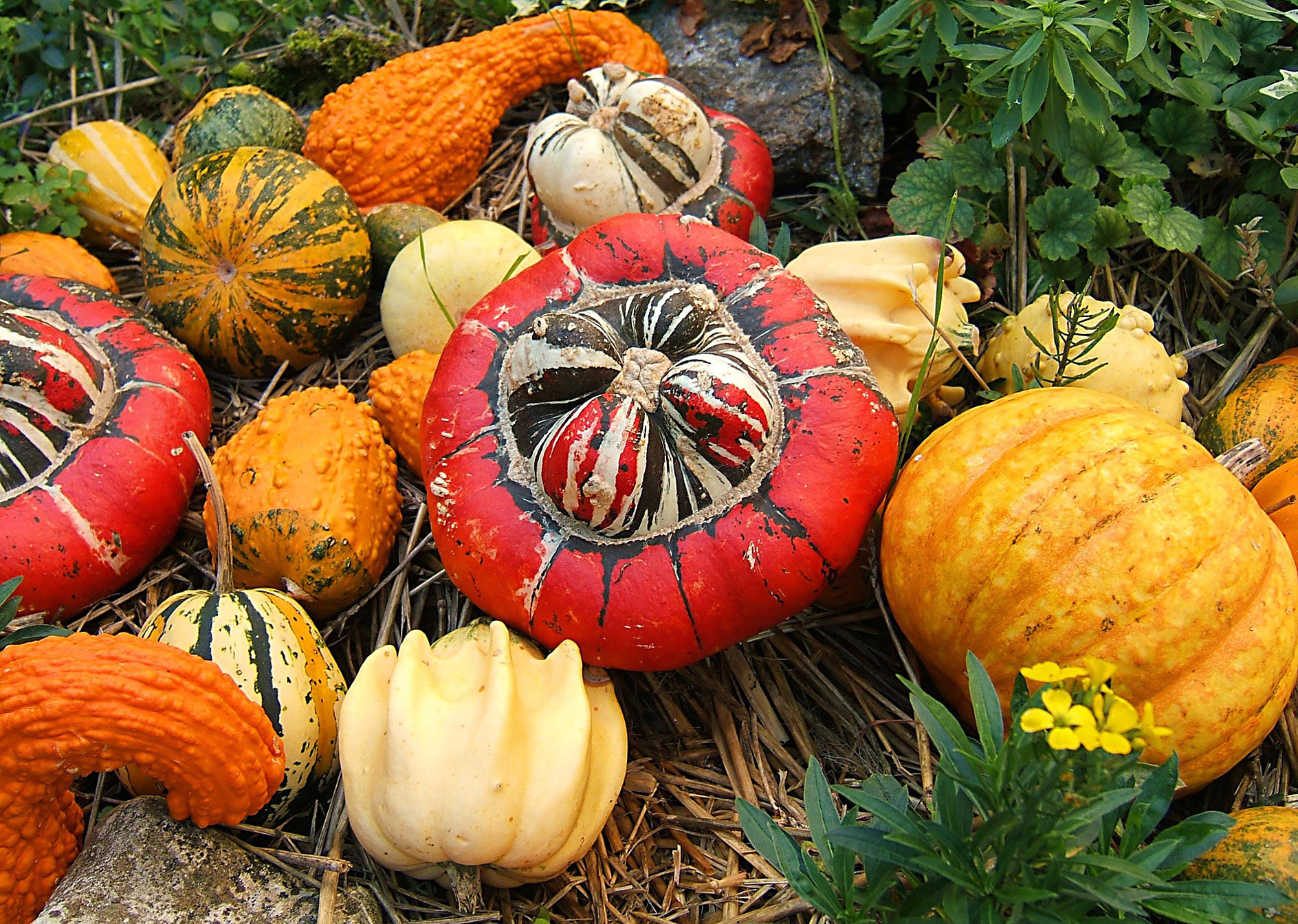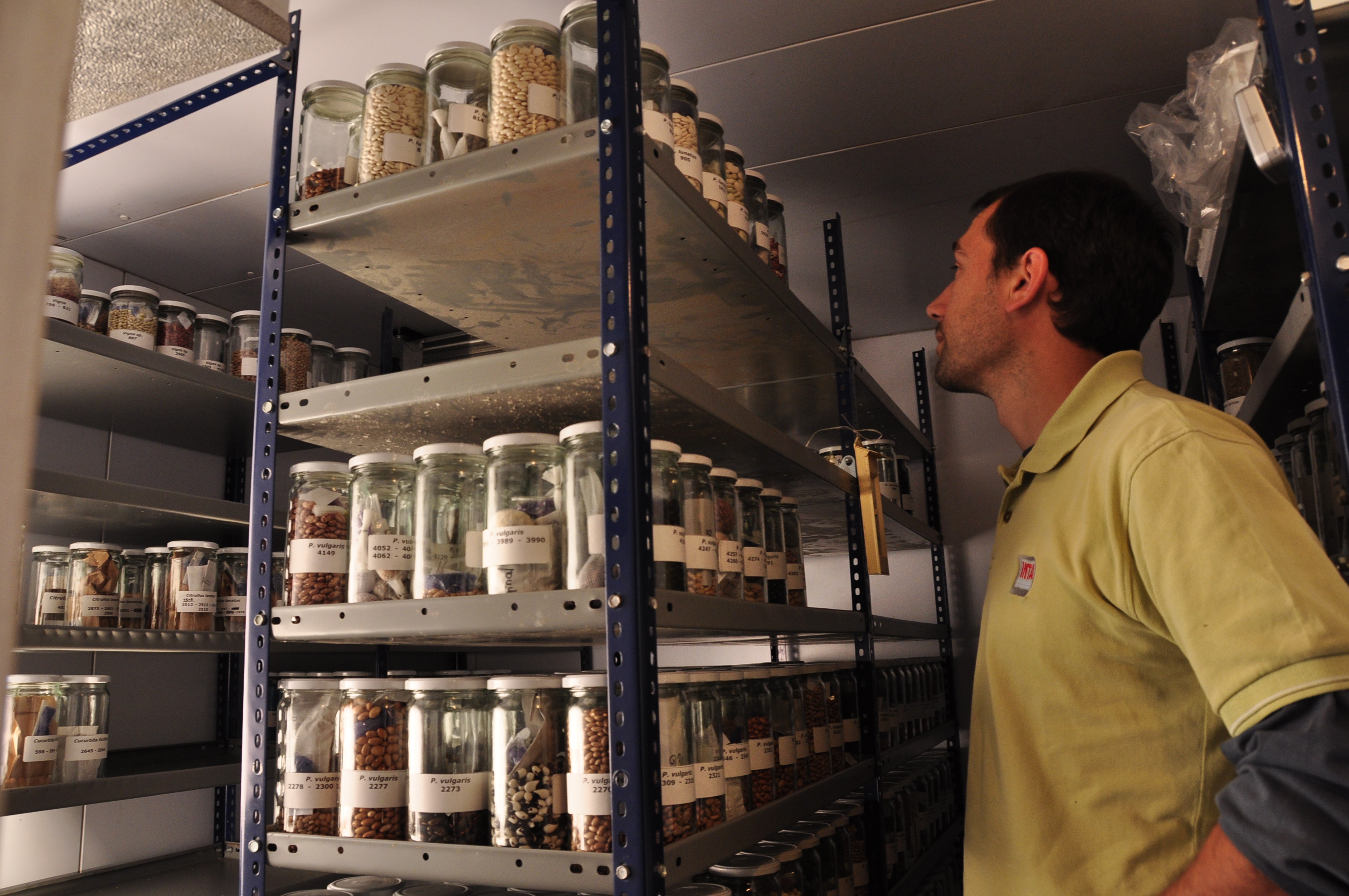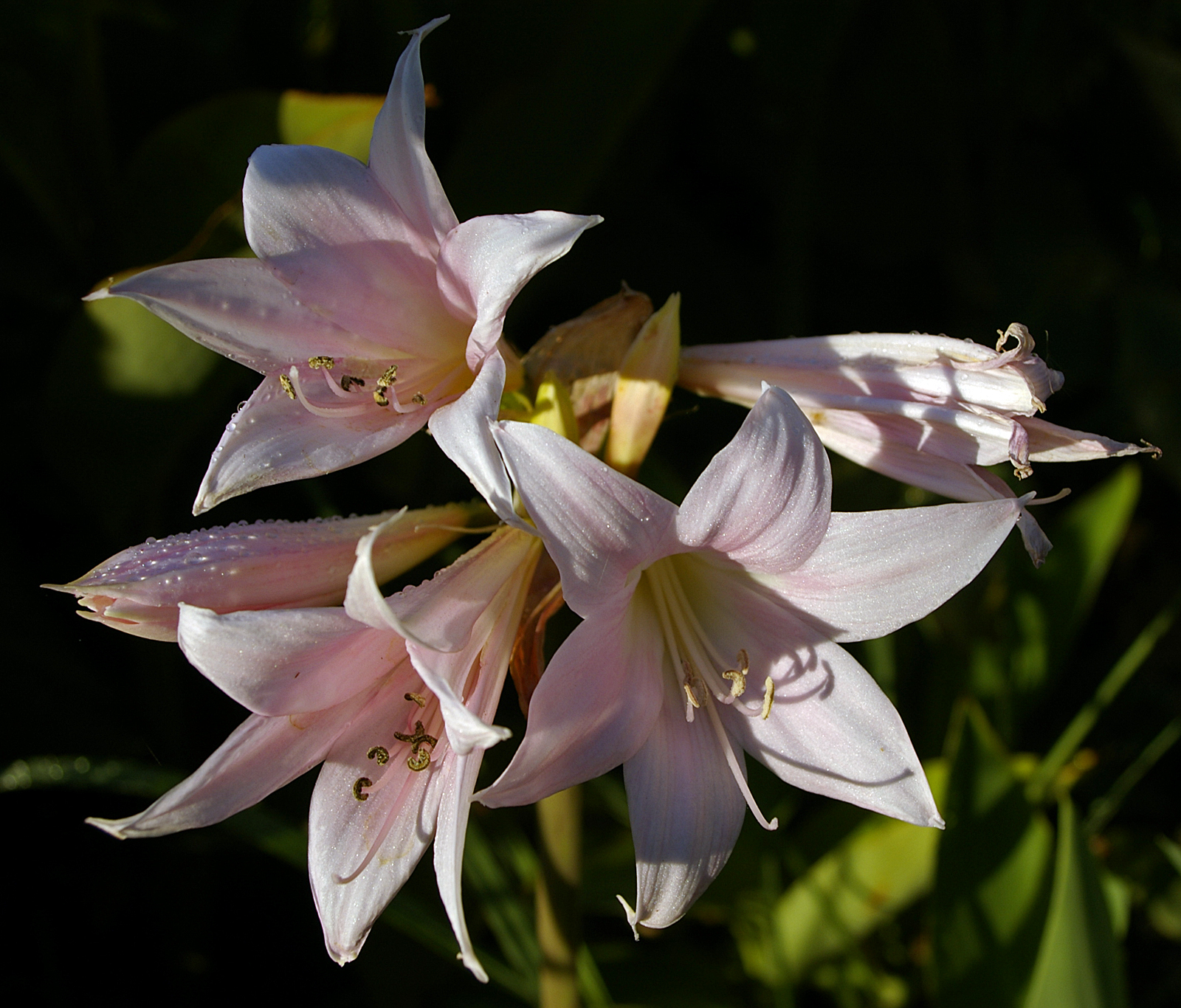|
Thomas W. Whitaker
Thomas Wallace Whitaker (August 13, 1904 – November 29, 1993) was an American botanist and horticulturist who spent most of his career working as a geneticist for the United States Department of Agriculture (USDA). He specialized in the study of economically important plants such as squashes, investigating their systematics and resistance to disease. Early life and education Whitaker was born August 14, 1904, in Monrovia, California. ''Note: Some sources erroneously list his birth year as 1905.'' He grew up on a farm and worked his way through college, graduating from University of California, Davis in 1927 with a bachelor of science degree. Continuing his education under a DuPont Fellowship, he graduated from the University of Virginia (UVA) with a master's degree in 1929 and PhD in 1931. Both of those degrees were in biology with concentrations in genetics and cytology. While at UVA, he spent summers at the Blandy Experimental Farm. He did postdoctoral work at Bussey Instit ... [...More Info...] [...Related Items...] OR: [Wikipedia] [Google] [Baidu] |
Monrovia, California
Monrovia is a city in the foothills of the San Gabriel Mountains in the San Gabriel Valley of Los Angeles County, California, United States. The population was 37,931 at the 2020 census. Monrovia has been used for filming TV shows, movies and commercials. History Monrovia is the fourth-oldest general-law city in Los Angeles County and the L.A. Basin (after Los Angeles, Santa Monica, and Pasadena, all now charter cities). Incorporated in 1887, it has grown from a sparse community of orange ranches to a residential community of over 37,000. Around 500 BC, the Tongva, a band of Shoshonean-speaking Indians, established settlements in what is now the San Gabriel Valley. They were called the Gabrieliño Indians by early Spanish missionaries, a tribe of Mission Indians. The Tongva were not farmers; they gathered wild seeds, berries, and plants along rivers and in marshlands. Abundant oaks in the Valley, such as Coast live oak, Coast Live Oak and Interior live oak, Interior Live Oak ... [...More Info...] [...Related Items...] OR: [Wikipedia] [Google] [Baidu] |
Agnes Scott College
Agnes Scott College is a private women's liberal arts college in Decatur, Georgia. The college enrolls approximately 1,000 undergraduate and graduate students. The college is affiliated with the Presbyterian Church and is considered one of the Seven Sisters of the South. It also offers co-educational graduate programs. History The college was founded in 1889 as Decatur Female Seminary by Presbyterian minister Frank Henry Gaines. In 1890, the name was changed to Agnes Scott Institute to honor the mother of the college's primary benefactor, Col. George Washington Scott. The name was changed again to Agnes Scott College in 1906, and remains today a women's college. Agnes Scott is considered the first higher education institution in the state of Georgia to receive regional accreditation. The ninth and current president since July 2018 is Leocadia I. Zak, who previously worked as director of the U.S. Trade and Development Agency (USTDA). On July 27, 1994, the campus was listed ... [...More Info...] [...Related Items...] OR: [Wikipedia] [Google] [Baidu] |
Amaryllidaceae
The Amaryllidaceae are a family of herbaceous, mainly perennial and bulbous (rarely rhizomatous) flowering plants in the monocot order Asparagales. The family takes its name from the genus ''Amaryllis'' and is commonly known as the amaryllis family. The leaves are usually linear, and the flowers are usually bisexual and symmetrical, arranged in umbels on the stem. The petals and sepals are undifferentiated as tepals, which may be fused at the base into a floral tube. Some also display a corona. Allyl sulfide compounds produce the characteristic odour of the onion subfamily (Allioideae). The family, which was originally created in 1805, now contains about 1600 species, divided into about 70–75 genera, 17 tribes and three subfamilies, the Agapanthoideae (agapanthus), Allioideae (onions and chives) and Amaryllidoideae (amaryllis, daffodils, snowdrops). Over time, it has seen much reorganisation and at various times was combined with the related Liliaceae. Since 2009, a very broa ... [...More Info...] [...Related Items...] OR: [Wikipedia] [Google] [Baidu] |
Botanical Society Of America
The Botanical Society of America (BSA) represents professional and amateur botanists, researchers, educators and students in over 80 countries of the world. It functions as a United States nonprofit 501(c)(3) membership society. History The society was first established in 1893 as an outgrowth from the Botanical Club of the American Association for the Advancement of Science at a meeting in Rochester, New York, on August 22, 1892. The organizing principles of the society were the enhancement of the study of plants in North America and to professionalize such efforts. In 1906, the organization merged with the Society for Plant Morphology and Physiology and the American Mycological Society. Sections The society has 16 special interest sections: Former presidents Former presidents of the society have included: * William Trelease - Director of the Missouri Botanical Garden and the first president of the society * Nathaniel Lord Britton - Cofounder of the New York Botanical Garden ... [...More Info...] [...Related Items...] OR: [Wikipedia] [Google] [Baidu] |
Guggenheim Fellowship
Guggenheim Fellowships are grants that have been awarded annually since by the John Simon Guggenheim Memorial Foundation to those "who have demonstrated exceptional capacity for productive scholarship or exceptional creative ability in the arts." Each year, the foundation issues awards in each of two separate competitions: * One open to citizens and permanent residents of the United States and Canada. * The other to citizens and permanent residents of Latin America and the Caribbean. The Latin America and Caribbean competition is currently suspended "while we examine the workings and efficacy of the program. The U.S. and Canadian competition is unaffected by this suspension." The performing arts are excluded, although composers, film directors, and choreographers are eligible. The fellowships are not open to students, only to "advanced professionals in mid-career" such as published authors. The fellows may spend the money as they see fit, as the purpose is to give fellows "b ... [...More Info...] [...Related Items...] OR: [Wikipedia] [Google] [Baidu] |
Germplasm
Germplasm are living genetic resources such as seeds or tissues that are maintained for the purpose of animal and plant breeding, preservation, and other research uses. These resources may take the form of seed collections stored in seed banks, trees growing in nurseries, animal breeding lines maintained in animal breeding programs or gene banks, etc. Germplasm collections can range from collections of wild species to elite, domesticated breeding lines that have undergone extensive human selection. Germplasm collection is important for the maintenance of biological diversity and food security. See also * Animal genetic resources for food and agriculture *Conservation biology *Cryoconservation of animal genetic resources *Forest genetic resources *International Treaty on Plant Genetic Resources for Food and Agriculture * Plant genetic resources *Seed saving References *Day-Rubenstein, K and Heisey, P. 2003. Plant Genetic Resources: New Rules for International Exchange' * 63 p. * ... [...More Info...] [...Related Items...] OR: [Wikipedia] [Google] [Baidu] |
Cucurbitaceae
The Cucurbitaceae, also called cucurbits or the gourd family, are a plant family consisting of about 965 species in around 95 genera, of which the most important to humans are: *''Cucurbita'' – squash, pumpkin, zucchini, some gourds *''Lagenaria'' – calabash, and others that are inedible *''Citrullus'' – watermelon (''C. lanatus'', ''C. colocynthis'') and others *''Cucumis'' – cucumber (''C. sativus''), various melons and vines *''Momordica'' – bitter melon *''Luffa'' – the common name is also luffa, sometimes spelled loofah (when fully ripened, two species of this fibrous fruit are the source of the loofah scrubbing sponge) *''Cyclanthera'' – Caigua The plants in this family are grown around the tropics and in temperate areas, where those with edible fruits were among the earliest cultivated plants in both the Old and New Worlds. The family Cucurbitaceae ranks among the highest of plant families for number and percentage of species used as human food. The name ' ... [...More Info...] [...Related Items...] OR: [Wikipedia] [Google] [Baidu] |
Biological Classification
In biology, taxonomy () is the scientific study of naming, defining ( circumscribing) and classifying groups of biological organisms based on shared characteristics. Organisms are grouped into taxa (singular: taxon) and these groups are given a taxonomic rank; groups of a given rank can be aggregated to form a more inclusive group of higher rank, thus creating a taxonomic hierarchy. The principal ranks in modern use are domain, kingdom, phylum (''division'' is sometimes used in botany in place of ''phylum''), class, order, family, genus, and species. The Swedish botanist Carl Linnaeus is regarded as the founder of the current system of taxonomy, as he developed a ranked system known as Linnaean taxonomy for categorizing organisms and binomial nomenclature for naming organisms. With advances in the theory, data and analytical technology of biological systematics, the Linnaean system has transformed into a system of modern biological classification intended to reflect the evolut ... [...More Info...] [...Related Items...] OR: [Wikipedia] [Google] [Baidu] |
Lettuce
Lettuce (''Lactuca sativa'') is an annual plant of the family Asteraceae. It is most often grown as a leaf vegetable, but sometimes for its stem and seeds. Lettuce is most often used for salads, although it is also seen in other kinds of food, such as soups, sandwiches and wraps; it can also be grilled. One variety, celtuce (asparagus lettuce), is grown for its stems, which are eaten either raw or cooked. In addition to its main use as a leafy green, it has also gathered religious and medicinal significance over centuries of human consumption. Europe and North America originally dominated the market for lettuce, but by the late 20th century the consumption of lettuce had spread throughout the world. , world production of lettuce and chicory was 27 million tonnes, 56percent of which came from China. Lettuce was originally farmed by the ancient Egyptians, who transformed it from a plant whose seeds were used to obtain oil into an important food crop raised for its succulent leav ... [...More Info...] [...Related Items...] OR: [Wikipedia] [Google] [Baidu] |
Cantaloupes
The cantaloupe, rockmelon (Australia and New Zealand, although cantaloupe is used in some states of Australia), sweet melon, or spanspek (Southern Africa) is a melon that is a variety of the muskmelon species (''Cucumis melo'') from the family Cucurbitaceae. Cantaloupes range in weight from . Originally, ''cantaloupe'' referred only to the non-netted, orange-fleshed melons of Europe, but today may refer to any orange-fleshed melon of the ''C. melo'' species. Etymology and origin The name ''cantaloupe'' was derived in the 18th century via French from The Cantus Region of Italian , which was formerly a papal county seat near Rome, after the fruit was introduced there from Armenia. It was first mentioned in English literature in 1739. The cantaloupe most likely originated in a region from South Asia to Africa. It was later introduced to Europe, and around 1890, became a commercial crop in the United States. ''Melon'' derived from use in Old French as during the 13th century, ... [...More Info...] [...Related Items...] OR: [Wikipedia] [Google] [Baidu] |
Amaryllis
''Amaryllis'' () is the only genus in the subtribe Amaryllidinae (tribe Amaryllideae). It is a small genus of flowering bulbs, with two species. The better known of the two, ''Amaryllis belladonna'', is a native of the Western Cape region of South Africa, particularly the rocky southwest area between the Olifants River Valley and Knysna. For many years there was confusion among botanists over the generic names ''Amaryllis'' and ''Hippeastrum'', one result of which is that the common name "amaryllis" is mainly used for cultivars of the genus ''Hippeastrum'', widely sold in the winter months for their ability to bloom indoors. Plants of the genus ''Amaryllis'' are known as belladonna lily, Jersey lily, naked lady, amarillo, Easter lily in Southern Australia or, in South Africa, March lily due to its propensity to flower around March. This is one of numerous genera with the common name "lily" due to their flower shape and growth habit. However, they are only distantly related ... [...More Info...] [...Related Items...] OR: [Wikipedia] [Google] [Baidu] |









